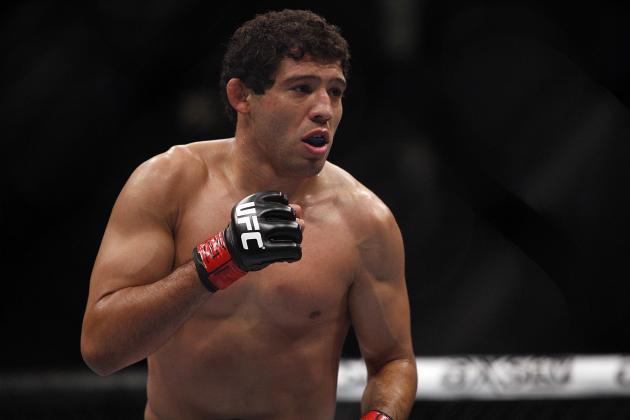The lives of professional fighters are filled with uncertainty; their successes and failures play out in the public eye for all to see.
When the cage door closes and the battle of wills begins, it becomes a matter of opportunity. One walks away victorious, the other defeated, the outcome sometimes determined by only the slightest of margins.
What happens under the bright lights is what the fans are left to debate, but rarely are they given a glimpse into what it takes to make the walk to the cage in the first place.
This is what the climb looks like. This is The Fighting Life.
****
One night in the fall of 1993 changed everything—or started everything—depending on how you look at it.
Under the bright lights of the McNichols Arena, a lanky Brazilian stepped into a chain-link cage called the Octagon and proceeded to twist and choke his way to a tournament championship. Royce Gracie's performance at UFC 1 would lay the foundation for what has become one of the fastest growing sports in the world and introduce the masses to his family's signature brand of jiu-jitsu.
Back in the early days of action inside the cage, the term "mixed martial arts" took on a different meaning from how it is currently perceived. The original tournaments promoted by the UFC were built on the notion that fans were tuning in to see a variety of disciplines squaring off to determine which would truly be the dominant brand of violence.
As the sport progressed and those trading blows inside the Octagon began to take on a more athletic shape, the initial concept of MMA began to fade into the background. It wasn't long before the tournament format vanished, taking the Kung Fu experts, mulleted karate black belts and beer-bellied brawlers along with it, as a new breed of fighter began to emerge.

A collection of highly credentialed wrestlers would keep the days of the single-disciplined fighter alive for a bit longer, but that chapter would eventually close as the next wave of fighters reached maturity and began to dominate the sport. Suddenly, mixed martial arts was no longer a concept but a lifestyle adopted by those who committed themselves to becoming versed in multiple disciplines.
Fighters needed to be capable of posing multiple threats inside the cage or face being left slumped over, choked out and stamped with a short shelf life as a mixed martial artist.
There is no shortage of harsh realities in MMA, and those who wished to have any type of career inside the cage immediately set about adapting their skill sets. Wrestlers and jiu-jitsu practitioners hired boxing and muay thai coaches, while strikers started to invest countless hours attempting to stop takedowns and grappling with Brazilian imports in an effort to become versed in the art of ground fighting.
While these practices have continued in the current era of the sport, fighters are working harder than ever before to push their skill sets in order to keep up with the game. More often than not, those efforts are rewarded inside the cage, as top fighters continue to show marked improvements and take their games to new heights. That said, keeping the correct balance between new skills and a solid foundation requires the utmost attention.
For some, it is a carousel that suddenly spins out of control. But for others it is the process that takes them to the top of the fight game.
***
When it comes to fighters who continue to evolve but have remained true to their strengths, former long-reigning Strikeforce champion and current UFC title contender Gilbert Melendez is a perfect example. Other than a background in wrestling, "El Nino" started his MMA career with few other weapons but still found success by implementing a formula where his wrestling, heart and tenacity were a tough lineup to handle.
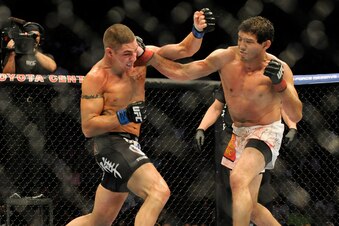
Throughout years of working with close friends and teammates Jake Shields and Nick and Nate Diaz, the "Skrap Pack" leader has certainly developed new tools in his arsenal, but Melendez has never allowed those new talents to divert him from his established base.
While the 30-year-old has consistently engaged in some of the most exciting, action-packed tilts to hit the cage over the past five years, he's done so with full knowledge and confidence that his personal strengths will always be sharp and up to speed.
Nevertheless, Melendez has been in the fight game for the better part of the last decade and has seen his fair share of fighters who have either over-corrected their skills or have completely abandoned the things that initially made them successful. He knows the push to evolve physical talents can be a delicate manner, but Melendez also believes proper focus can make all the difference.
"There was definitely a point in my career where I had to evolve my striking game because I could no longer rely on using takedowns and ground-and-pound," Melendez said. "Guys were improving their takedown defense and were sprawling and brawling, so I had to expand my striking to include combinations that would set up my takedowns or allow me to get inside where I could work my game.
"In the process of improving my striking, I definitely started to neglect my wrestling. My striking got better but my takedowns got worse, and that really didn't put me any further ahead when I really took a hard look at it. And I really learned a lot from taking notice of that.
"I had seen that situation have really bad results for other fighters, and I wasn't going to go down that path. I learned you have to work to improve your skills, but you can't get away from the strengths that initially made you successful. A fighter can't just decide to dedicate themselves to an entirely new discipline and ignore working on other areas. You have to keep all your tools sharp if you want them to work to their potential on fight night.
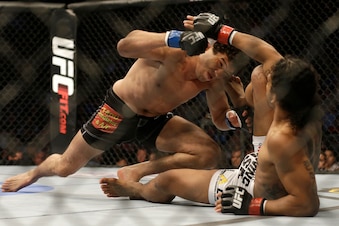
"When I see a fighter who has gotten away from their strength, I also have to blame the coaches involved. A lot of the coaches in our sport aren't complete MMA coaches where their focus is only on one particular aspect of the game. Those coaches can come in and change a fighter's stance and their entire approach.
"You need a coach who understands the fighter they are working with and truly understands what type of fighter they are working with. In that sense, you need a coach who is willing to evolve with you."
The fighters of today are constantly bringing new techniques and building off proven moves inside the cage, and Melendez knows keeping up with the competition is something that every fighter must do. This makes expanding your skill set a necessity, something that is going to require a tremendous amount of work since picking up multiple skill sets at the same time is a tough mountain to climb.
Yet as difficult as that may be, it's not impossible, and many fighters reach a place where they are of respectable skill in several different disciplines.
While those accomplishments are admirable by all accounts, it isn't enough to reach elite or championship levels, in Melendez's opinion. In order for a fighter to solidify their status as one of the best in the world, they must be able to take their efficiency in multiple disciplines and be able to work them all together in seamless fashion.
A fighter can be great on their feet and lights-out when the action hits the canvas, but if they are unable to work the right transitions or chain their skills together, those weapons are far less dangerous in the current environment of MMA.
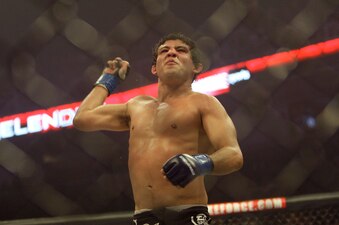
"I see guys who are very strong in boxing, wrestling and jiu-jitsu, but they just don't know how to chain them all together," Melendez said. "Fighters who have a strong transition game are the new breed of mixed martial artists.
"Eventually there is going to come a point where people stop being recognized for individual strengths and mixed martial arts is their art. The sport is heading in that direction, and some guys just need to figure that out. Of course you have your strength and your go-to, but you need to be able to put it all together.
"My wrestling shot is a lot stronger when I have you distracted and worried about my striking, and my striking is much more effective when you are worried about me taking you down. But if you aren't capable of working the transitions, then those two things that should be strengths can be nullified.
"If I put everything together, you are going to have a hard time shutting me down. When you add in the type of forward pressure I apply, it can get very confusing for an opponent. It's like a game of Tekken, and it gets pretty exciting out there."
****
In the process of evolving a skill set, any foundation can be neglected, but wrestling is certainly the place where the finger is most commonly pointed. While there have been examples in the past of judo players and jiu-jitsu practitioners who have departed from their proven skill sets in the hope of forwarding other elements of their game (like Demian Maia moonlighting as a striker), wrestlers are typically the most frequently guilty party.
Inside the walls of Ultimate Fitness in Sacramento is where one of the prominent collections of wrestlers-turned-mixed martial artists can be found. With former WEC featherweight champion and perennial UFC bantamweight contender Urijah Faber at the helm, Team Alpha Male has consistently produced some of the top talent to hit the sport's biggest stage. The fighters who compete under the "TAM" banner may initially walk into the gym as wrestlers, but it isn't long before they are presenting a well-rounded attack.
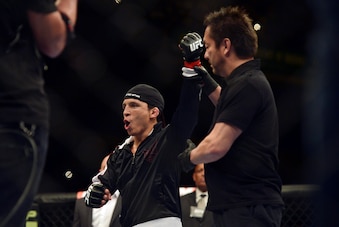
For the last seven years, Joseph Benavidez has been a key member of the Sacramento-based squad and has been one of the brightest examples of the increased versatility that is going on with the Team Alpha Male fighters. Where his teammates Chad Mendes and Danny Castillo have reached a level where their striking attacks are very respectable, Benavidez has been well ahead of that particular curve for some time.
Even with that being the case, the former two-time flyweight title-challenger certainly understands how easy it would be to fall victim to the pitfalls that pop up when a fighter is pushing to broaden their skill set. The training required to be a top-level competitor in mixed martial arts these days is beyond demanding, and taking shortcuts around the tedious grind of wrestling is a route he's seen many fighters take.
That said, Benavidez also believes there are additional elements involved beyond a fighter simply falling in love with a new skill. There is a big push on the current landscape to see more fights where two people get inside the cage and trade leather until someone falls down. Those types of fights seem to resonate with the fanbase on a greater level than a technical ground fight between two highly capable grapplers.
This situation creates a slippery slope, and the former two-division contender is quick to see the down side of the matter.
"I've seen a lot of people get away from what they are really good at, and I feel like it happens to wrestlers more than anyone else," Benavidez said. "Punching someone in the face is much easier than working to get them to the ground and pounding them out.
"Let's also not forget how much more fan-friendly fighting on the feet is compared to a fight where you are wrestling a guy for 15 minutes. I think it's kind of encouraged actually. You see these guys who have been successful wrestling at a Division I school, have taken everyone down at will, but suddenly they turn into boxers and kickboxers.
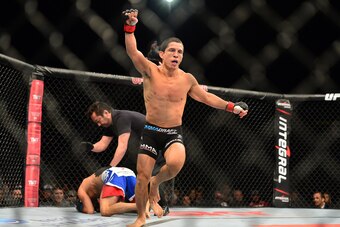
"They fall in love with striking because it's easier to knock someone out than it is trying to contain them for 25 minutes. Honestly, I think keeping someone on the mat is more impressive than anything. Fans obviously don't think so, but if you really think about what is happening there it will change your mind. You are holding another grown man on the ground—one who is being held there against his will and is trying to get up—but your skills are so dominant he can't get you off of him.
"The most important thing in my opinion is to continue to work your strengths," he added. "It is great to build other skills, but once you get away from what you do best you are in trouble. The crazy thing is that wrestling has such a different tilt. You can take a guy who is a top-level wrestler that has never stepped foot in a cage before, put him against an accomplished striker, and that wrestler has a chance of winning because he is going to get the takedown.
"I remember when guys like Chad Mendes and Lance Palmer came to our gym. It didn't matter that they didn't know how to throw a proper punch or kick, they were putting everyone down because of their wrestling. Once their striking gets to a level to complement their wrestling, they are a nightmare to fight.
"Look at Mendes, man. The first part of his career he was taking everyone down, but once his striking got sharp, he started knocking dudes out one after the other. But even when he's scoring knockouts, Chad is still working his wrestling in the gym the entire time. It's that important. A well-versed ground fighter can beat an accomplished striker most of the time without knowing anything in the stand-up game, but it doesn't work the other way around.
"Look at guys like Royce Gracie or even Ben Askren. All they have to do is get a hold of you, and your striking is nullified. If those guys couldn't go to the ground and had to strike the entire fight, it would be brutal, but this isn't kickboxing we are talking about. This is mixed martial arts, and guys who stick to what they are good at are always the most successful."
Another fighter who is well-versed in just how complex the evolution of a skill set can be is Mark Munoz. "The Filipino Wrecking Machine" came to the professional ranks as a former Division I national champion wrestler from the storied program at Oklahoma State University and immediately set about expanding his physical talents inside the cage.

While there were certainly bumps along the way, Munoz's blue-collar work ethic and ability to soak up knowledge at a rapid rate allowed him to make ground as he battled the opposition on the sport's biggest stage. The Team Reign leader put together a handful of solid winning streaks but was turned back in several bouts where potential title contention was on the line.
Though suffering those setbacks was undoubtedly frustrating, Munoz saw them as a part of the bigger process.
He knew he had to make improvements in his game, but at the same time he also recognized he was head and shoulders above the pack in the areas of the fight where he was the strongest. Throughout his time inside the Octagon he had shown knockout power, but Munoz is a wrestler through and through, and he knew his best performances would come when he was able to chain those two elements together.
"It's all about perspective," Munoz said. "People think if you keep putting in the work then you are going to keep improving. And there is some truth to that for sure, but it really depends on where that work is focused.
"If you just work on your weaknesses and stop working on the things that got you there in the first place, it is not going to be good for you. It's not going to work out. But if you are strengthening your weakness and correcting mistakes while refining your strengths, you are going to see actual improvement. That is the perfect formula for legitimate improvement.
"When I fought Lyoto [Machida], I was more concerned with what he was going to do that it stopped me from doing the things that I needed to do. I wasn't able to execute what I am great at because I was too concerned with what he was going to try to do, and that hurt me. What we are talking about right now is something that rings true across the board with fighters and something every fighter faces.
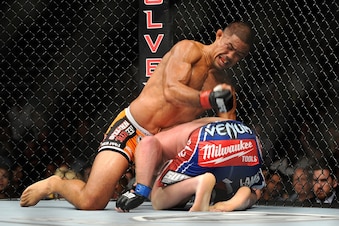
"If we are going to be successful in this sport then we have to learn new things in order to stay ahead of the competition. That said, truly evolving as a fighter means taking those new things and adding them to your style, not changing your style to use those new things. You don't change your style because that takes away your instinct. I think Bruce Lee said it best that fighting is a balance between instinct and control.
"If you have too much instinct you are just going to fly off the cuff and get caught," he added. "But if you have too much control then you will be unable to pull the trigger when you need to. The struggle to progress is true with every fighter and you can certainly go too far if you don't keep the proper focus."
Duane Finley is a featured columnist for Bleacher Report. All quotes are obtained firsthand unless noted otherwise.
